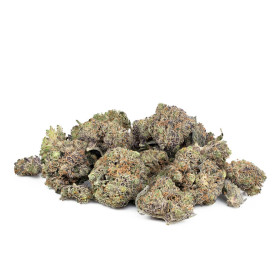Marijuana
The Pioneering Role of Cannabis in Managing Chronic Pain and Illness in Canadians
Chronic pain and illness affect millions of Canadians, casting a shadow over daily activities and overall quality of life. Traditional medications, while effective for some, often come with side effects that can sometimes outweigh their benefits. In recent years, cannabis has emerged as a beacon of hope, offering an alternative path to relief. This article delves into the transformative role of cannabis in managing chronic pain and illness, highlighting its efficacy and the scientific principles underpinning its use.
Understanding the Role of Cannabinoids in Pain Management
Cannabinoids, the active compounds found in cannabis, interact with the body’s endocannabinoid system (ECS), a complex network that plays a key role in regulating pain, mood, appetite, and inflammation. The ECS consists of cannabinoid receptors scattered throughout the body, with CB1 receptors predominantly in the brain and nervous system, and CB2 receptors more commonly found in the immune system. When cannabinoids bind to these receptors, they modulate the release of neurotransmitters and produce an analgesic effect, reducing pain perception.
Cannabis and Chronic Back Pain Relief
Chronic back pain, a prevalent issue among adults, often leads to significant discomfort and disability. Medicinal cannabis, with its potent analgesic properties, has been identified as a viable option for individuals struggling with this condition. Studies suggest that cannabinoids can diminish pain intensity, improve sleep quality, and enhance functional mobility, making daily tasks more manageable for those afflicted by chronic back pain.
The Anti-Inflammatory Benefits of Cannabis
Inflammation is a natural response of the body’s immune system to injury or infection but can cause significant pain and discomfort when chronic. Cannabis exhibits powerful anti-inflammatory properties, primarily through the action of cannabidiol (CBD), a non-psychoactive cannabinoid. CBD interacts with the ECS to reduce the production of inflammatory cytokines and inhibit the proliferation of immune cells, thereby mitigating inflammation and its associated symptoms.
Cannabis as a Treatment for Joint Pain
Joint pain, resulting from conditions such as arthritis, significantly impacts mobility and quality of life. Cannabis has shown promise in treating joint pain by reducing inflammation, curbing pain, and fostering a sense of well-being. The analgesic and anti-inflammatory effects of THC (tetrahydrocannabinol) and CBD contribute to cannabis’s effectiveness in alleviating joint discomfort, offering a glimmer of hope to those seeking relief.
For a deeper understanding of the scientific principles and research backing these claims, refer to the comprehensive review available on the National Center for Biotechnology Information’s website, “The Health Effects of Cannabis and Cannabinoids: The Current State of Evidence and Recommendations for Research” (read more here).
Conclusion
Cannabis’s role in managing chronic pain and illness represents a significant shift in the therapeutic landscape. By harnessing the analgesic and anti-inflammatory properties of cannabinoids, Canadians suffering from chronic back pain, joint pain, and other forms of chronic illness can find solace and relief. As the body of scientific evidence continues to grow, so too does the potential for cannabis to improve the lives of those plagued by chronic conditions. Embracing cannabis as part of a comprehensive pain management strategy could be the key to unlocking a higher quality of life for many Canadians.















